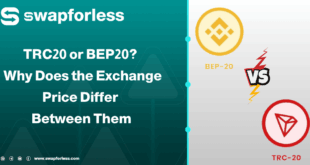Between the Lines and the Markets: Online trading may have appeared to be simple: clear prices, large “buy” and “sell” buttons, and promises of instant gains.
Have you even considered what is happening in the background, though? That little margin in which buyers pay more but sellers get less? This is where successful transactions happen.
It’s supply and demand, the framework behind every single transaction.
It’s not just about seeing the prices, though; it’s about seeing those unseen variables, such as the spread—that tiny number you don’t even notice but which makes all the difference in your profitability.
This article will transport you inside the inner workings of the market to learn what the difference between bid and ask prices is and how to use this knowledge to stay clear of sudden losses and make intelligent profits.
What is the Ask Price?

The asking price is essentially the minimum price at which a seller will sell their cryptocurrency.
If you wish to purchase Bitcoin, you’ll notice upon opening your trading platform that there is a list of prices to buy Bitcoin. The lowest price in this list is referred to as the ask price.
Why is it termed the asking price? That is the price at which sellers are asking for their cryptocurrency—the price at which they will sell it.
In other words, if you wish to purchase bitcoins currently, you will have to pay this price to someone who wishes to sell.
For instance, if the price at which you are being asked to buy Bitcoin is $30,000, then that is the lowest price that someone is offering to sell Bitcoin to you. If you are okay with this price, then you can make the purchase right away.
What is the Bid Price?

Bid price refers to the price that an investor is ready to pay for an asset at that instant. It is how much money a buyer is ready to pay to buy cryptocurrency.
If you wish to sell your Bitcoins now, seek the highest price that is being offered in the market. If the highest price that someone will pay for Bitcoin is $29,900, then this is the most generous price that an existing buyer offers.
If you accept this price, then you can sell your Bitcoins right away.
The Difference Between Bid and Ask Prices (Spread)

The difference between the bid and ask prices is known as the “spread.” The gap between the two is a key indicator traders use to assess market liquidity.
How do you calculate the spread? Bid-Ask Spread = Ask Price – Bid Price
In our example, the ask price for Bitcoin was $30,000, and the bid price was $29,900. Therefore, the spread is:
$30,000 – $29,900 = $100
The tighter the spread, the more liquid the market. This means there are many buyers and sellers, indicating it’s easy to make trades without accepting prices far from the current price.
Conversely, a wide spread means the market is less liquid, and it might be difficult to find buyers or sellers at prices close to the current price.
Why Does the Bid-Ask Spread Exist?
The bid-ask spread arises naturally as a result of the interaction between supply and demand in the market, where the price of a stock or asset is determined by aggregating the buy and sell orders submitted by different parties.
This interaction is what creates the market and shapes the final price. However, brokers often benefit from this interaction by taking a profit margin in the form of the difference between the bid and ask prices.
The size of the spread largely depends on the liquidity available in the market. In liquid markets, which are characterized by a large number of buyers and sellers, the spread is narrower due to the close proximity of ask and bid prices.
On the other hand, in illiquid markets where there is a lack of participation or activity, the spread becomes wider.
A lower spread is more beneficial for investors because it means lower transaction costs, making trading operations more efficient and less expensive.
Therefore, it is important for investors to seek out brokers that offer the smallest price difference or spread, especially when trading in markets characterized by high volatility or limited liquidity.
CEX vs DEX: Unpacking the Key Differences in Crypto Trading
How to Interpret the Bid-Ask Spread

Understanding the difference between the bid and ask prices helps traders make informed decisions, improve their strategies, and reduce their losses.
This is especially important for traders who rely on short-term strategies like day trading or rapid trading, as the narrower the spread, the lower the trading costs and the greater the chances of making a profit.
The bid-ask spread is influenced by several key factors:
Volatility: Cryptocurrency volatility presents exceptional trading opportunities but sometimes leads to wider spreads. Uncertainty about the short-term price direction often creates a larger bid-ask spread.
Trading Volume: Smaller trading platforms often experience wider spreads, even for popular cryptocurrencies like Bitcoin and Ethereum. This is due to the lower number of active traders on these platforms.
Coin Type: Less popular coins may also face wider spreads. When this happens, fewer market participants make the gap between the bid and ask price larger.
Trading Time: You’ll often find tighter spreads during peak hours, such as business hours. Conversely, quiet market times, such as weekends, see fewer large trades, often leading to wider spreads.
Liquidity: Leading cryptocurrencies like Bitcoin and Ethereum enjoy high liquidity—the ability to sell assets quickly without significant loss.
Market Uncertainty: During major news events or economic developments, and when fear or uncertainty is present, buyers are hesitant to offer prices close to the market, and sellers become more cautious, widening the difference between bid and ask prices.
Supply and Demand: When demand for an asset is very high, the bid price rises, while the ask price remains stable or rises less, leading to a narrower spread. Conversely, when supply is very high, the ask price falls, while the bid price remains stable or falls less, leading to a bid-ask spread.
Order Types: There are two main order types:
- Market Orders: These are executed immediately at the current market price.
- Limit Orders: These are placed at a specific price and remain on the order book until executed.
If the number of limit orders is low, the order book becomes less dense, leading to a wider spread.
How Bid and Ask Prices Affect Your Investment Decisions
Understanding bid and ask prices is often the key to whether you will have a successful or unsuccessful trade when making investment choices.
If you are intending to purchase a cryptocurrency but you see an extremely wide spread between the ask price and the bid price, then in such an instance, you might need to postpone making the trade.
Why? If you purchase the coin now, you are paying more than you might pay if you hold off until the spread tightens. Likewise, selling cryptocurrency widely can cost you part of the profit you anticipate.
This involves keeping an eye not just on prices but also on the “hidden costs” of trading. The spread is more than just a figure; it’s another cost you pay in every single transaction you enter.
Knowing how supply relates to demand can also assist in determining market health.
For instance, if you see that ask prices are increasing at a higher rate compared to bid prices, this might mean that the market is in high demand and will cause a rise in prices in the near future.
On the other hand, when ask prices are decreasing more quickly than bid prices, this can be an indication that momentum in markets is decreasing and may cause prices to drop.
Now You Speak Market!
Now that you’ve discovered the secrets of supply and demand, keep in mind that an astute trader does more than merely view the obvious price; he reads in between the lines, or in this case, in between bid and offer prices. Each “buy” click can cost you more than you anticipate.
Be wise, use limit orders, and keep an eye on the bid-ask spread. Because in the world of trading, those few coins saved today might turn into thousands tomorrow!
Next time you enter into a trade, ask yourself: Am I paying for speed? Should I hold out for something better? The questions themselves may be worth the difference between a sure loss and a surprise profit.
 swapforless blog
swapforless blog



